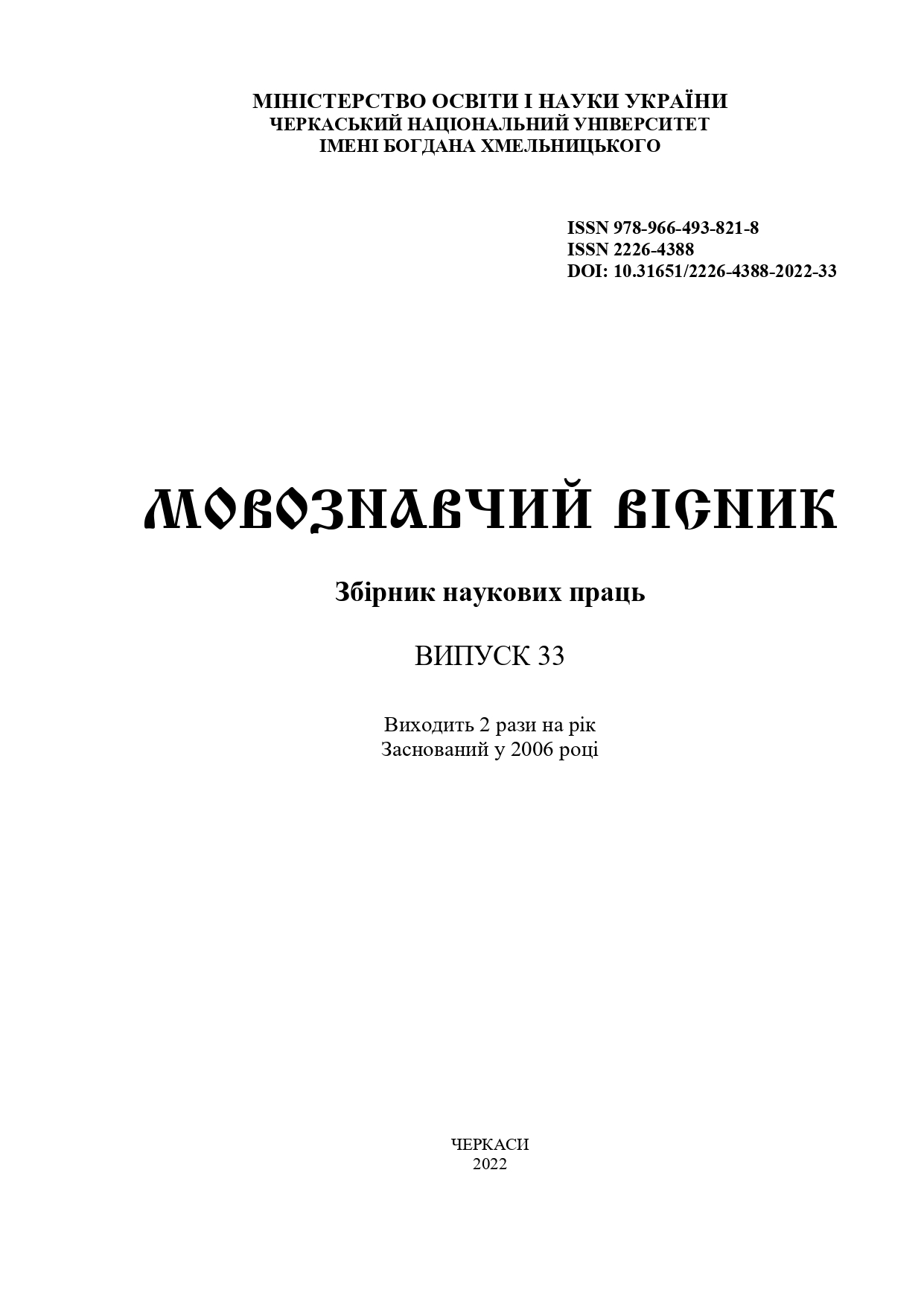POLYSEMY AS A SIGN OF LANGUAGE DYNAMICS
Main Article Content
Abstract
Introduction. Polysemy is one of the important manifestations of the systematic organization of the lexical composition of the language. This is a semantic universal, which, depending on the genetic and typological structure of each language, has a specific implementation and illustrates the surrounding world in the interrelationship of all its elements. It plays an important cognitive role.
Polysemy reflects the thinking of society. Some dictionary articles with a lot of polysemy are read for pleasure: there is so much interesting and instructive in them.
The purpose is to outline the main regularities and directions of the semantic development of polysemous words.
Results. On the example of adjectives and nouns, the main regularities and directions of the semantic development of multi-meaning words are outlined. It has been found that for indicative meanings, the scope of meaning is related to situational knowledge, for objective ones, the semantic
scope of the word implies knowledge of the function, purpose of the subject. Particular attention is paid to nominations representing three types of polysemy: radial polysemy – all meanings of a word are motivated by the same central meaning, chain polysemy – each new meaning of a word is motivated by another – closer to it – meaning, but the extreme meanings may not have common semantic components and radial-chain polysemy (most often used).
Originality. In the semantic development of words, it is advisable to separate the phenomena of polysemy from homonymy, in particular due to independent derivation from the same base or repeated hidden borrowing. It is necessary to take into account not only the factor of the time as appearance of the name, but also the existence of a base for its semantics in an already known word.
Conclusions. Polysemy is one of the important means of systematic organization of the lexical composition of the language. It reflects the consequences of human thinking, which captures in a multimeaning word the similarity between various objects and phenomena of objective reality. Polysemy makes the word a more flexible tool for thinking. It is associated with the tendency to economize linguistic means, since polysemy makes it possible to express a greater number of concepts without increasing the number of language forms.
Article Details
References
Karpilovska, Ye. А. (Ed.) (2017). Vplyv suspilnykh zmin na rozvytok ukrainskoi movy [Influence of
social changes on the development of the Ukrainian language]. Kyiv: Vydavnychyi dim Dmytra Buraho, 444 (in Ukr.).
Horetskyi, Ya. (1988). Dynamichnist i dynamika v movi [Dynamics and dynamics in language]. In:
Movoznavstvo [Linguistics], 6, 7–10 (in Ukr.).
Melnychuk, O. S. (Ed.) (1977). Slovnyk inshomovnykh sliv [Dictionary of foreign words]. Kyiv, 775 (in Ukr.).
Bilodid, I. K. (Ed.) (1970–1980). Slovnyk ukrainskoi movy [Dictionary of the Ukrainian language]: u
t. Kyiv: Naukova dumka (in Ukr.).
Slovnyk ukrainskoi movy v 11 t. Dodatkovyi tom (2017) [Dictionary of the Ukrainian language in 11
volumes. Additional volume]: u 2-kh kn. Kyiv: Vydavnychyi dim Dmytra Buraho (in Ukr.).
Snizhko, N. V. (2010). Modeli bahatoznachnosti ukrainskykh imennykiv (za materialamy tlumachnoi
leksykohrafii) [Models of polysemy of Ukrainian nouns (based on the materials of interpretive lexicography)]. In:
Leksykohrafichnyi biuleten [Lexicographic bulletin], 19, 83–94 (in Ukr.).
Skopnenko, O. I. & Tsymbaliuk, T. V. (2006). Suchasnyi slovnyk inshomovnykh sliv [Modern
dictionary of foreign words]. Kyiv: Dovira, 789 (in Ukr.).
Taranenko, O. O. (1980). Polisemichnyi paralelizm i yavyshche analohii [Polysemic parallelism and
the phenomenon of analogy]. Kyiv: Naukova dumka, 115 (in Ukr.).
Apresjan, J. (2000). Semantyka leksykalna. Synonimiczne środki języka [Lexical semantics.
Synonymous means of language]. Wrocław : Wydawnictwo Ossolineum, 439 (in Pol.).
Breal, M. (1987). Essai de semantigue (Science des significations) [Semantic Essay (Science of
Meanings)]. Paris: Librairie Hachette at C (in Fre.).
Paul, H. (1937). Principien der Sprachgeschichte [Principles of the history of language]. Halle, 309 (in Ger.).
Seuren, P. (2010). The Logic of Language. II. Oxford: Oxford University Press, 447 (in Еng.).
Steinthal, H. (1871). Abriss der Sprachwissenschaft. I: Einleitung in die Psychologie und
Sprachwissenschaft [Outline of Linguistics. I: Introduction to psychology and linguistics]. Berlin: Harwitz und
Gossmann, 525 (in Ger.).
Weinresch, U. (1953). Languages and Tsontacts. Thae Hague: Mouton (in Еng.).

